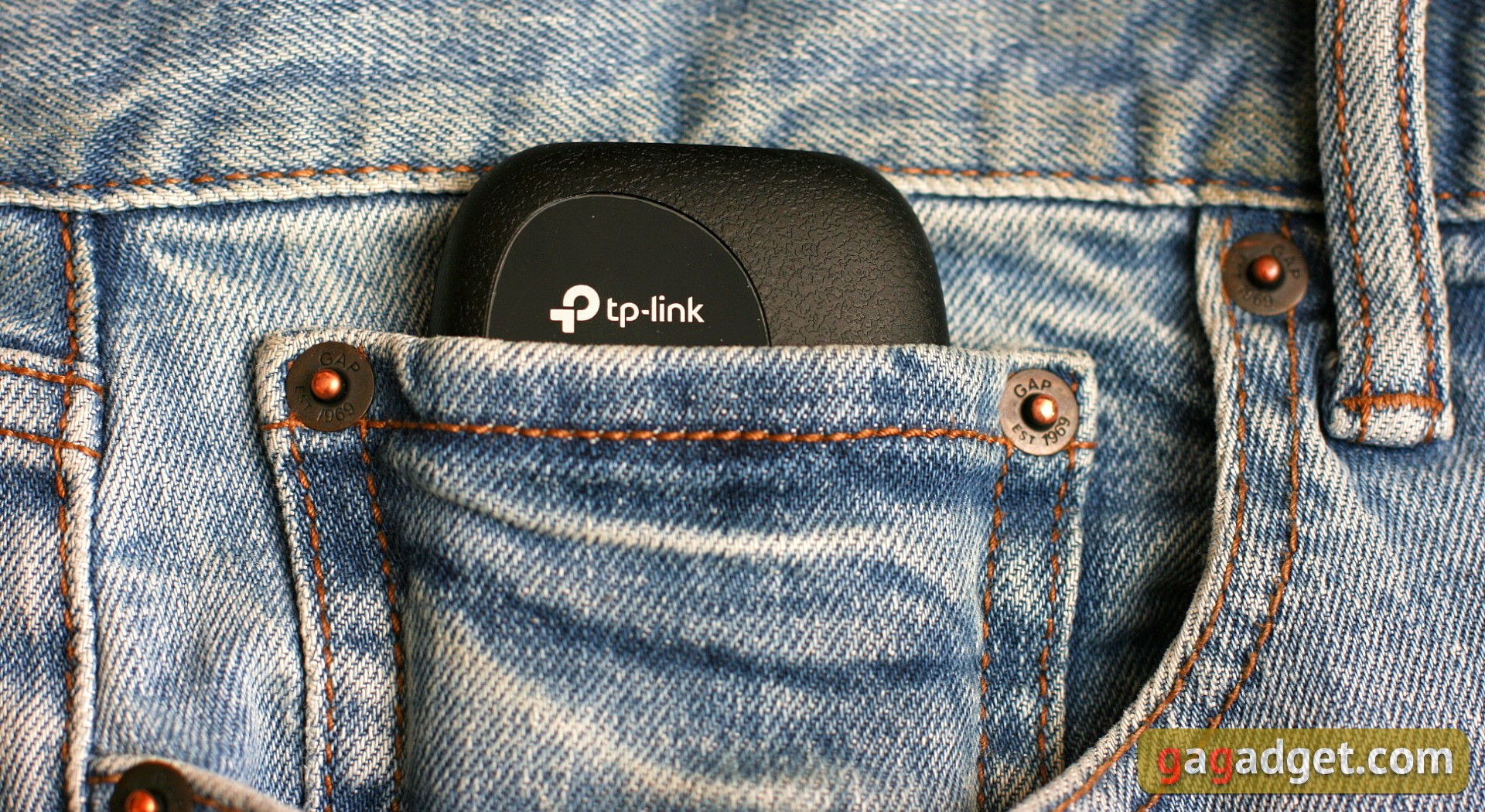
</ img>
Laptop in your bag, router in your pocket. In a small pocket. Yes, this is possible if the router is mobile. And if not
What is it?
TP-Link M7200 is a standalone mobile router with 4G support. It can distribute the Internet from a mobile network via Wi-Fi to ten other devices simultaneously.
What is interesting?
Because it's mobile. You can take it with you anywhere (where there is a mobile network, of course), and there will be Wi-Fi there. At the same time, it is compact, lightweight and practical.
What is in the box?
More like in a box.The packaging is small, as is the router itself inside it. In addition to it, there is a removable battery (as in all phones before), a charging cable (microUSB), adapters from microSIM and nanoSIM to a SIM card and small booklets with documentation. There is no charger included; you can use any charger from your smartphone or charge the router from the USB port of your computer.
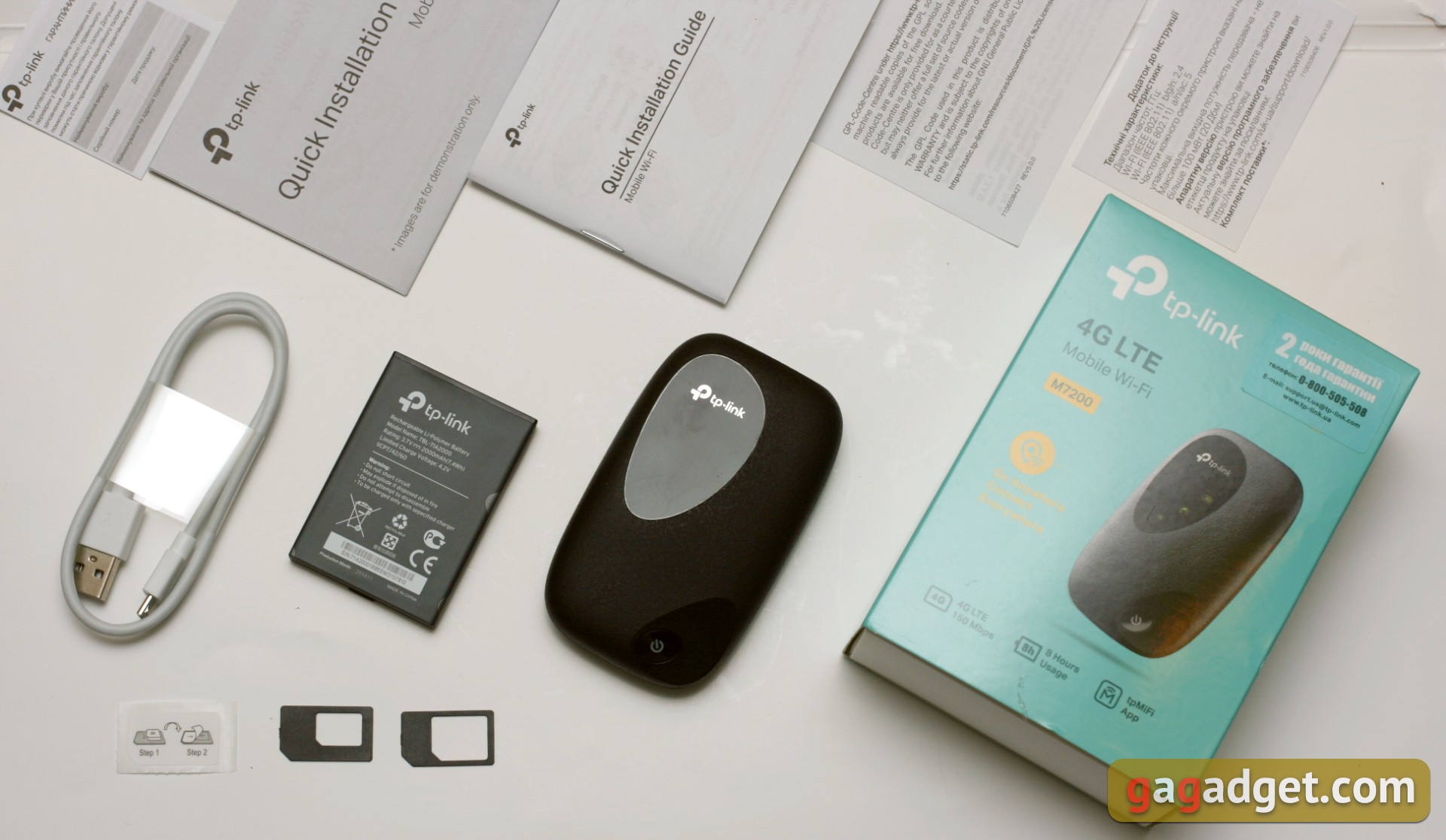
</ img>
What does it look like?
Solid and practical. Non-marking textured black plastic and a little gloss. On the front is the manufacturer's logo and a single button.

</ img>
On all other sides there is nothing except a microUSB connector for connecting to charging. There is still a bit too much gloss on the back; it gets scratched easily.
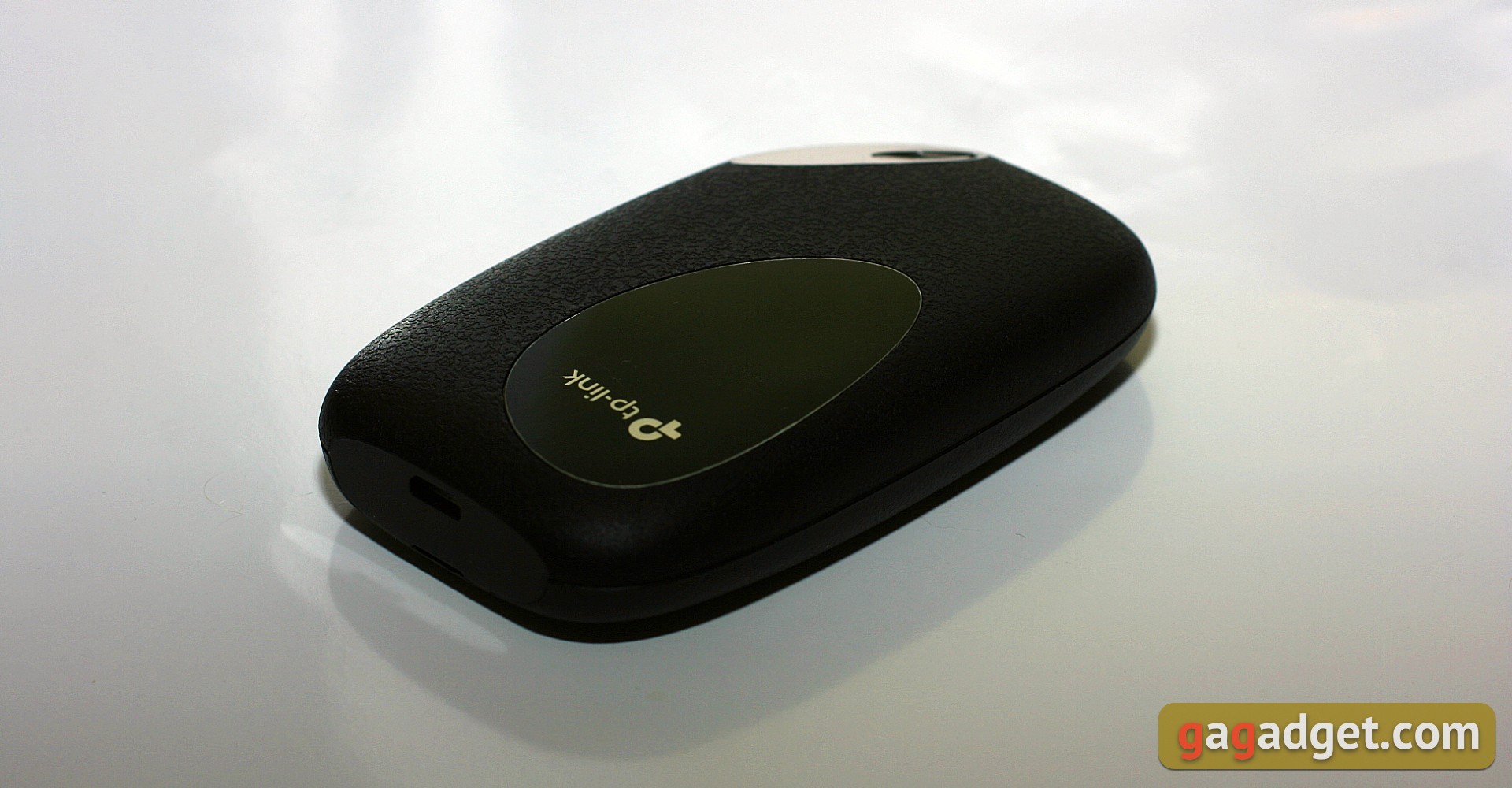
</ img>

</ img>

</ img>
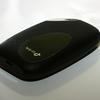
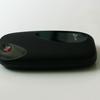
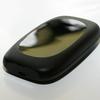
Looking at modern smartphones, we are unaccustomed tosuch, but here you can look under the cover. A removable 2000 mAh battery and a SIM card are installed here. Moreover, the tray is designed specifically for the full-size classic SIM card, if you have something more compact, use one of the supplied adapters.

</ img>
The sticker shows the starting namewireless network and a password for managing the device (these values can be changed later, but if the settings are reset, they will be restored again). The router is equipped with three green LED indicators: battery, internet and local network. The battery indicator flashes during charging mode and stays lit when charging is complete.
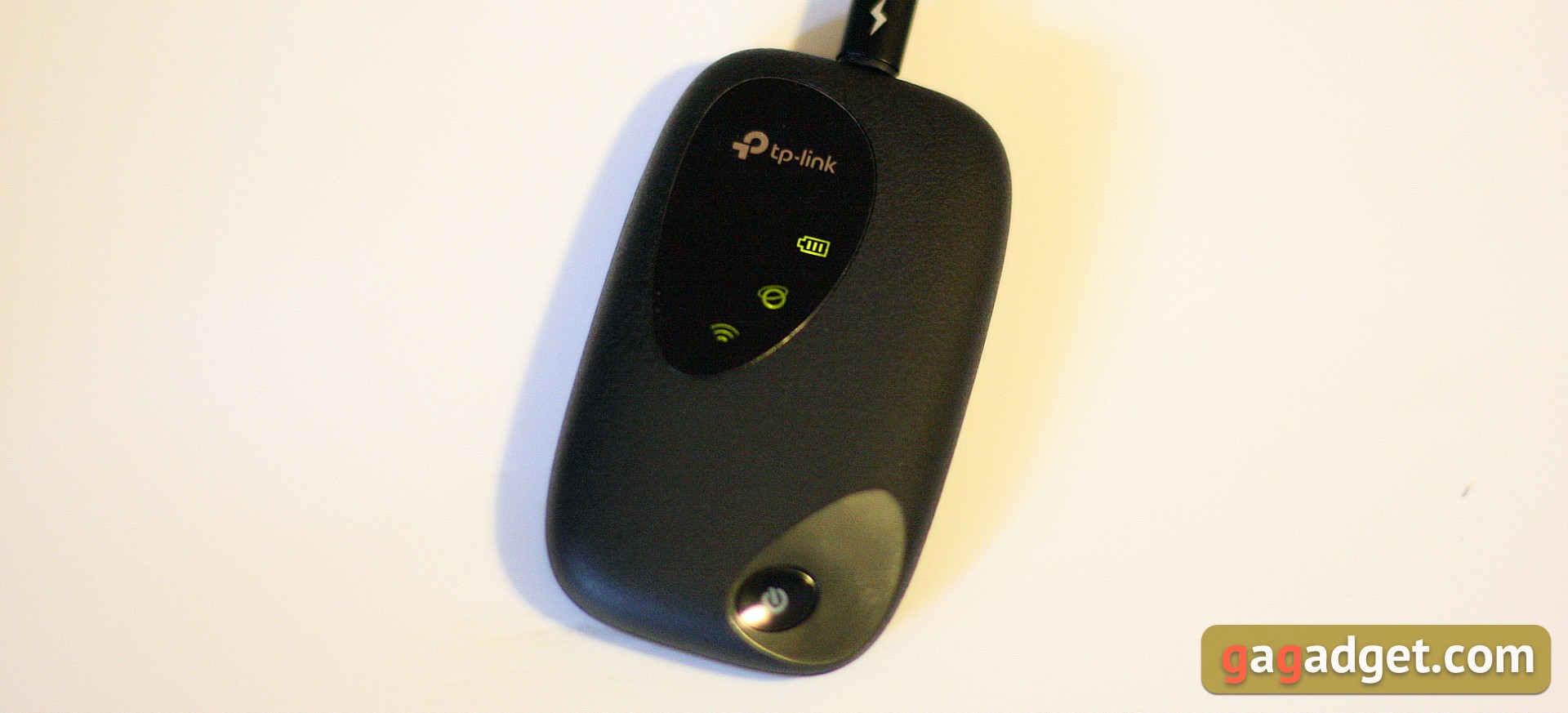
</ img>
TP-Link M7200 is compact and lightweight. The battery in the photo is shown for size comparison, it is not used in any way in the device.

</ img>

</ img>
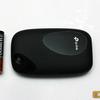

How to connect and configure?
Immediately after unpacking the box you should installbranded mobile application tpMiFi and launch the setup wizard. He will walk you through all the steps, starting from the very beginning. Good practice for completely untrained users. No registration is required to use the application; it works without any cloud accounts.

</ img>

</ img>

</ img>

</ img>
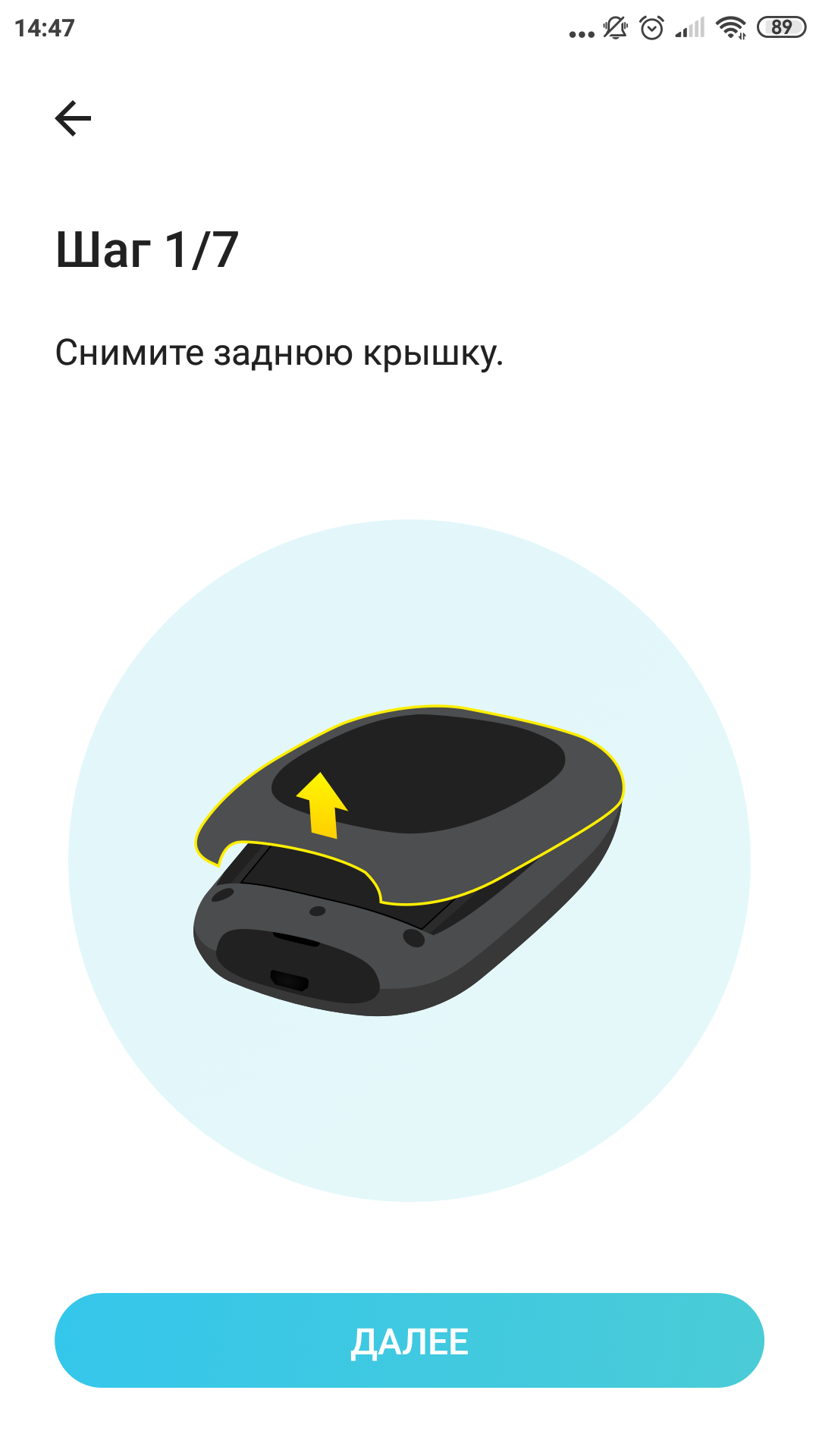
</ img>

</ img>

</ img>

</ img>
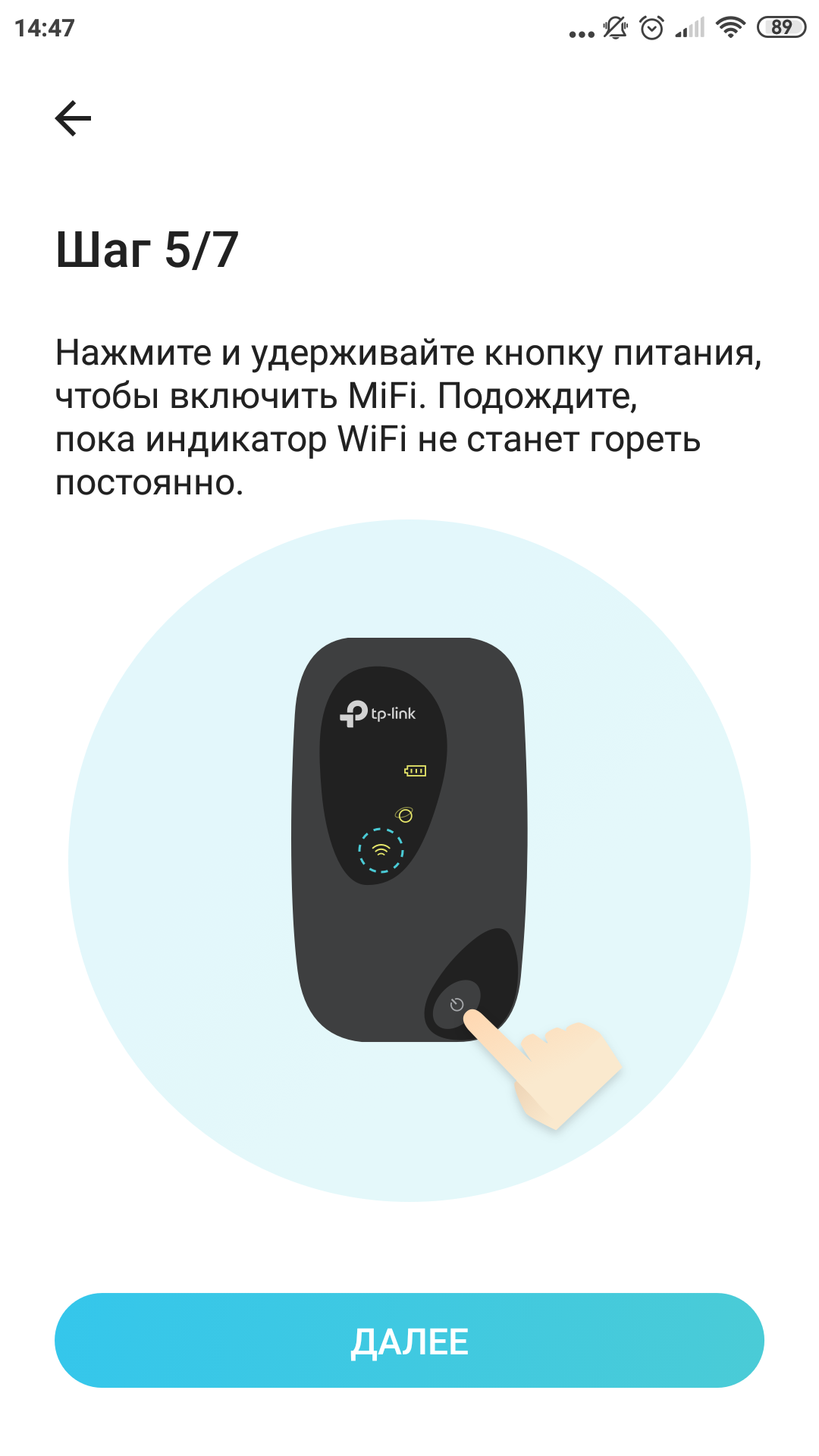
</ img>
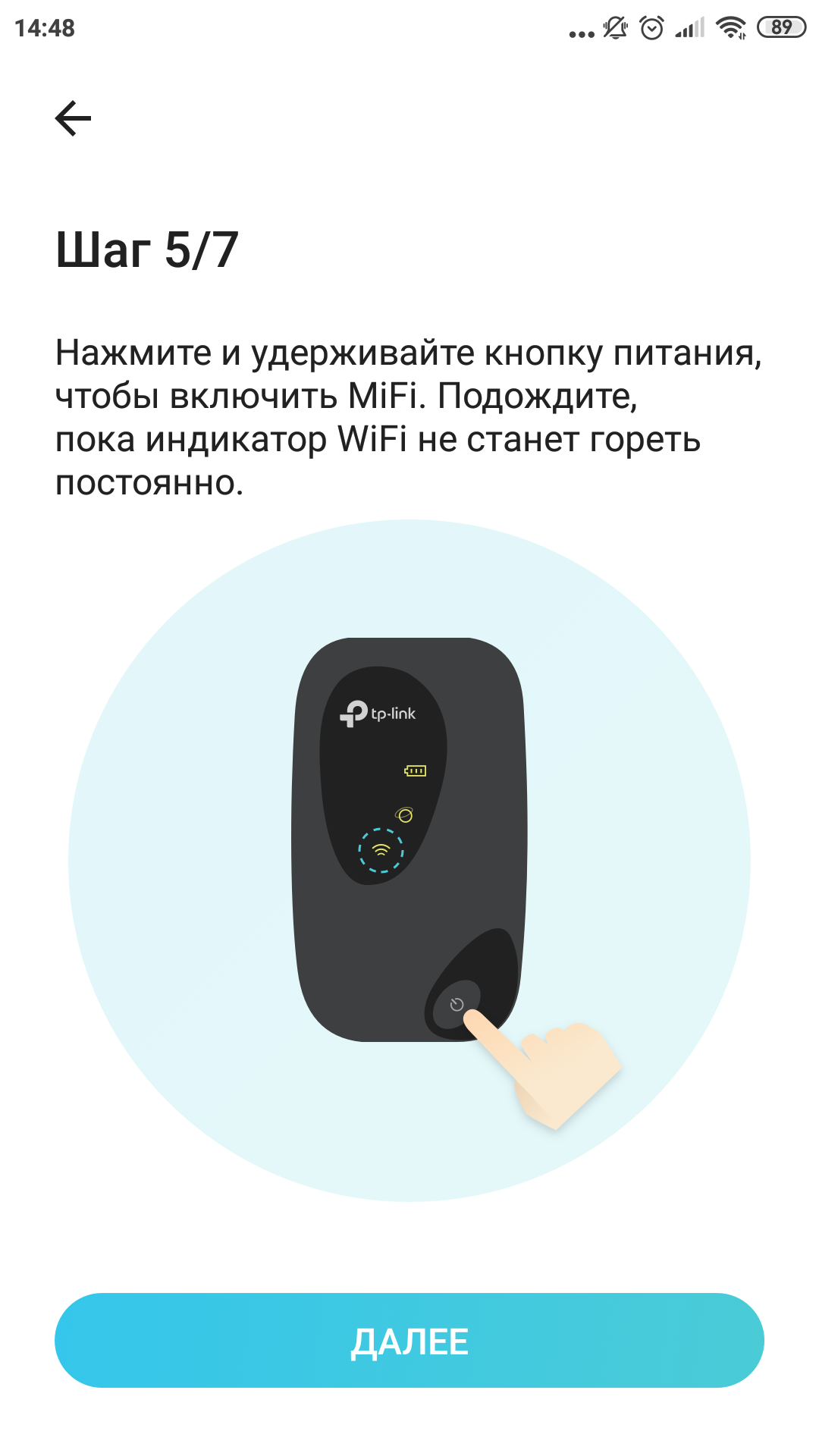
</ img>

</ img>

</ img>
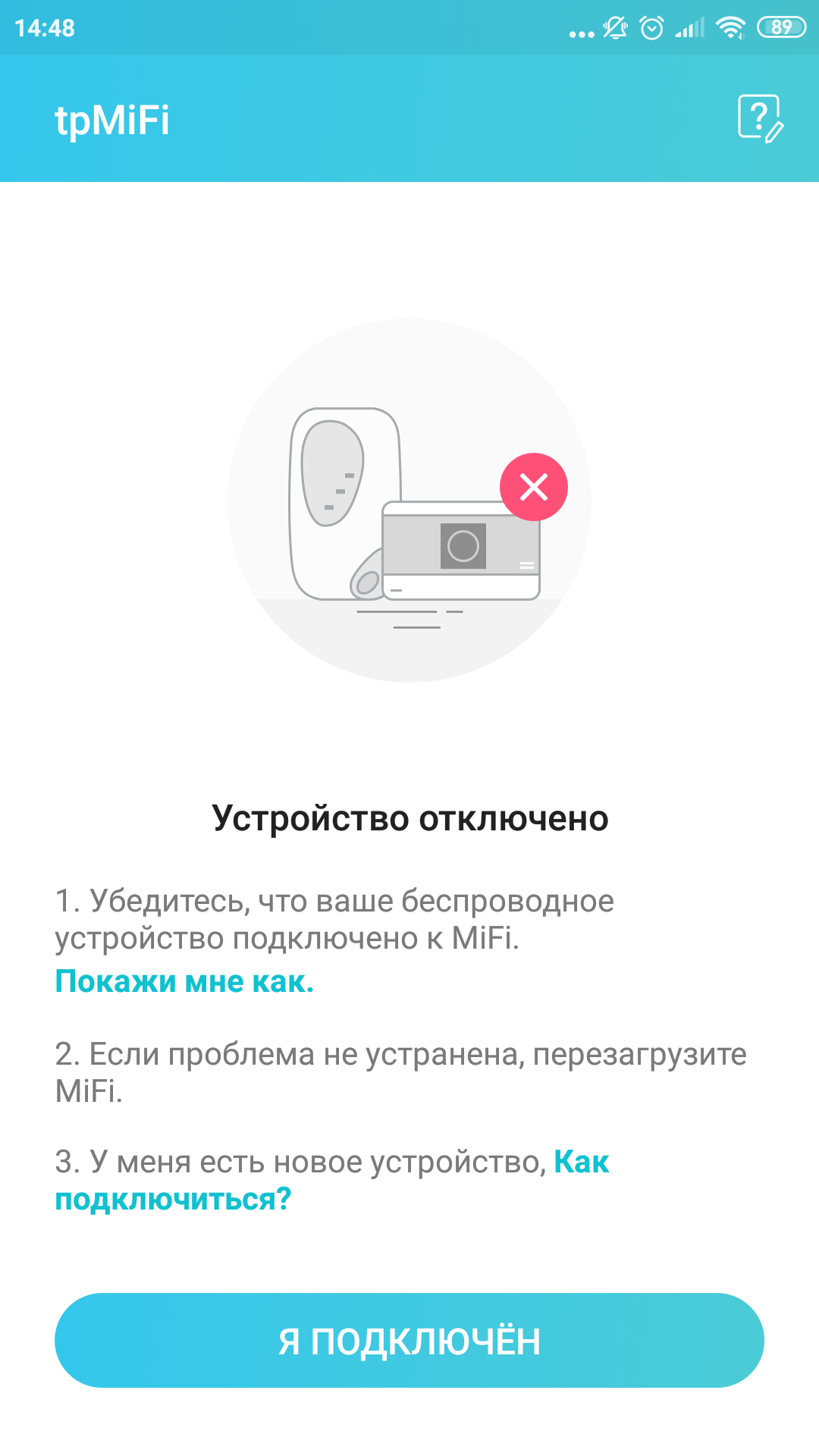
</ img>

</ img>

</ img>
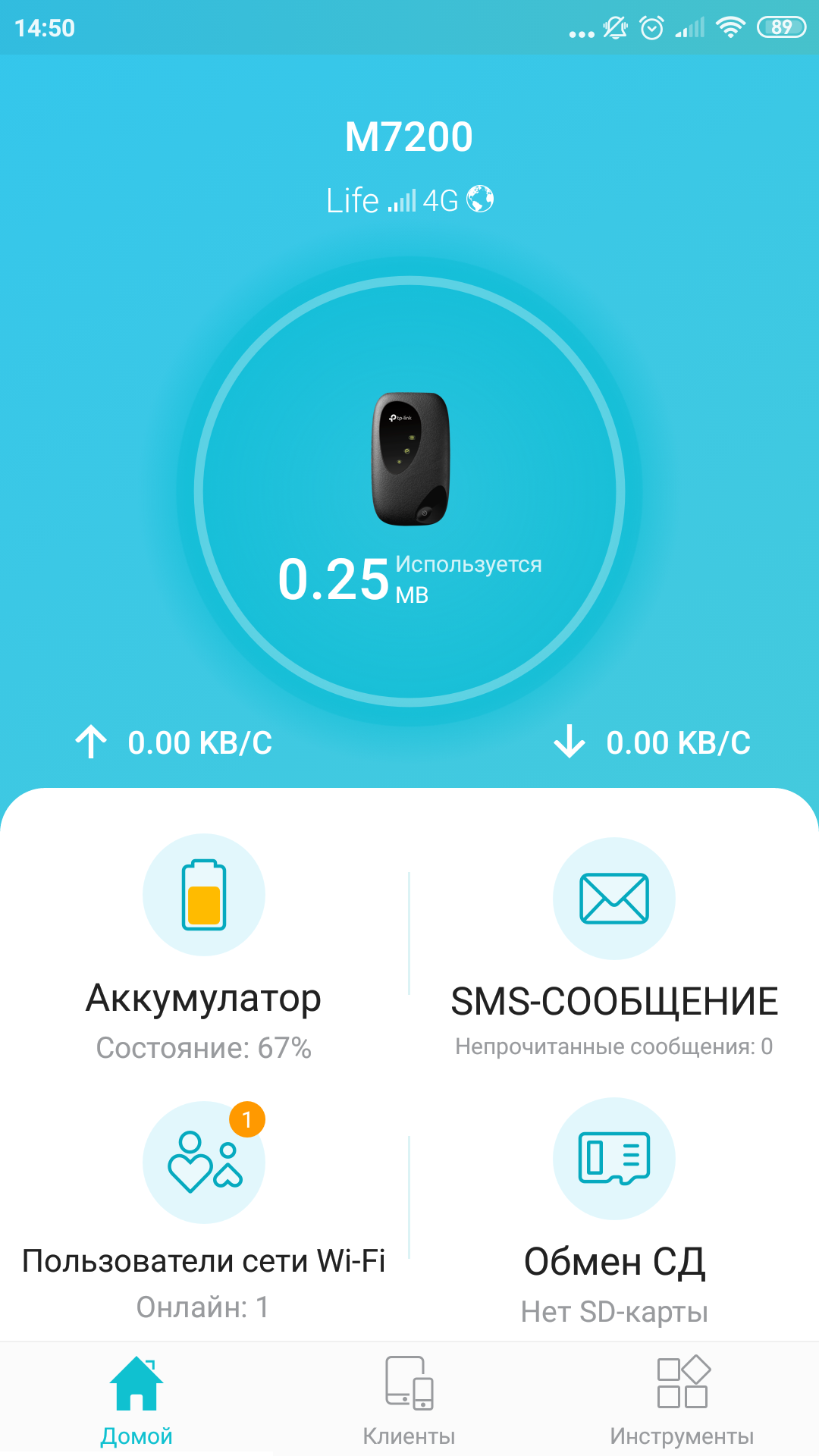
</ img>

</ img>



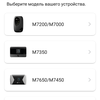
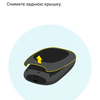

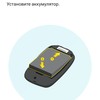

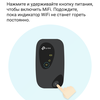



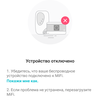


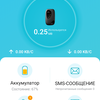

If opportunities (or desires) are establishedno application, just insert the SIM card and battery, turn on the device with a single button and connect to the access point with the name and password indicated on the sticker. Not very difficult, right?
So, everything worked, now let’s look at the standard onesapplication capabilities. The main screen displays basic data: traffic consumption, current speed, battery charge, number of active users, SMS notifications. Yes, if an SMS is sent to the SIM card installed in the router, it can be read. You can also send SMS from here. The SD card sharing function is also prominently displayed, but it only works with the older model of the M7350 router, which has a memory card slot. The settings menu looks extensive, but there aren't many options in each section. Here you can set a traffic limit, change the password for accessing the wireless network and change its name. There are settings for Internet connection, energy saving, a service section with functions for rebooting and updating the device’s firmware. The Russian-language localization of the application looks a little damp in places, and there are several funny moments in the texts. There is no Ukrainian language yet.

</ img>

</ img>

</ img>

</ img>

</ img>

</ img>

</ img>

</ img>

</ img>

</ img>

</ img>

</ img>

</ img>

</ img>

</ img>

</ img>

</ img>

</ img>

</ img>

</ img>

</ img>

</ img>

</ img>






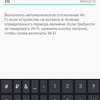






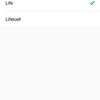







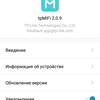

Alternative - control panelrouter in the web interface at http://tplinkmifi.net/. Of course, you can enter here only from a device connected to the wireless network of the router, it will not work from somewhere on the Internet. Interestingly, the interface is switched from mobile to desktop and vice versa, and you can choose the appropriate option already at the password entry stage. Modern adaptive interfaces allow you to get rid of such manual switching, but still this is a huge progress compared to the traditional router’s end-to-end admins, which are very difficult to use from the phone. The mobile version of the control panel is similar to what we have already seen in the application.
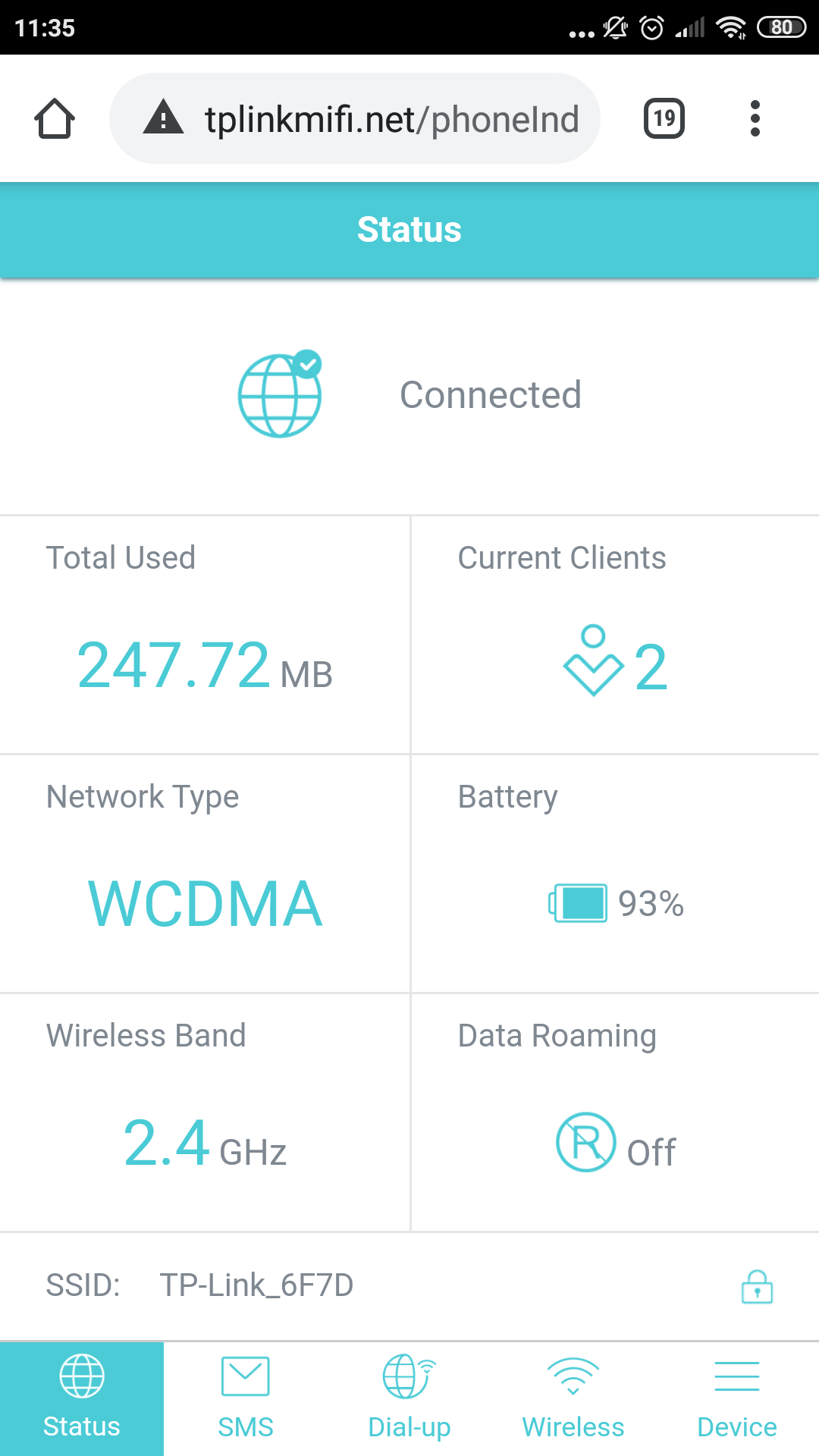
</ img>

</ img>

</ img>

</ img>
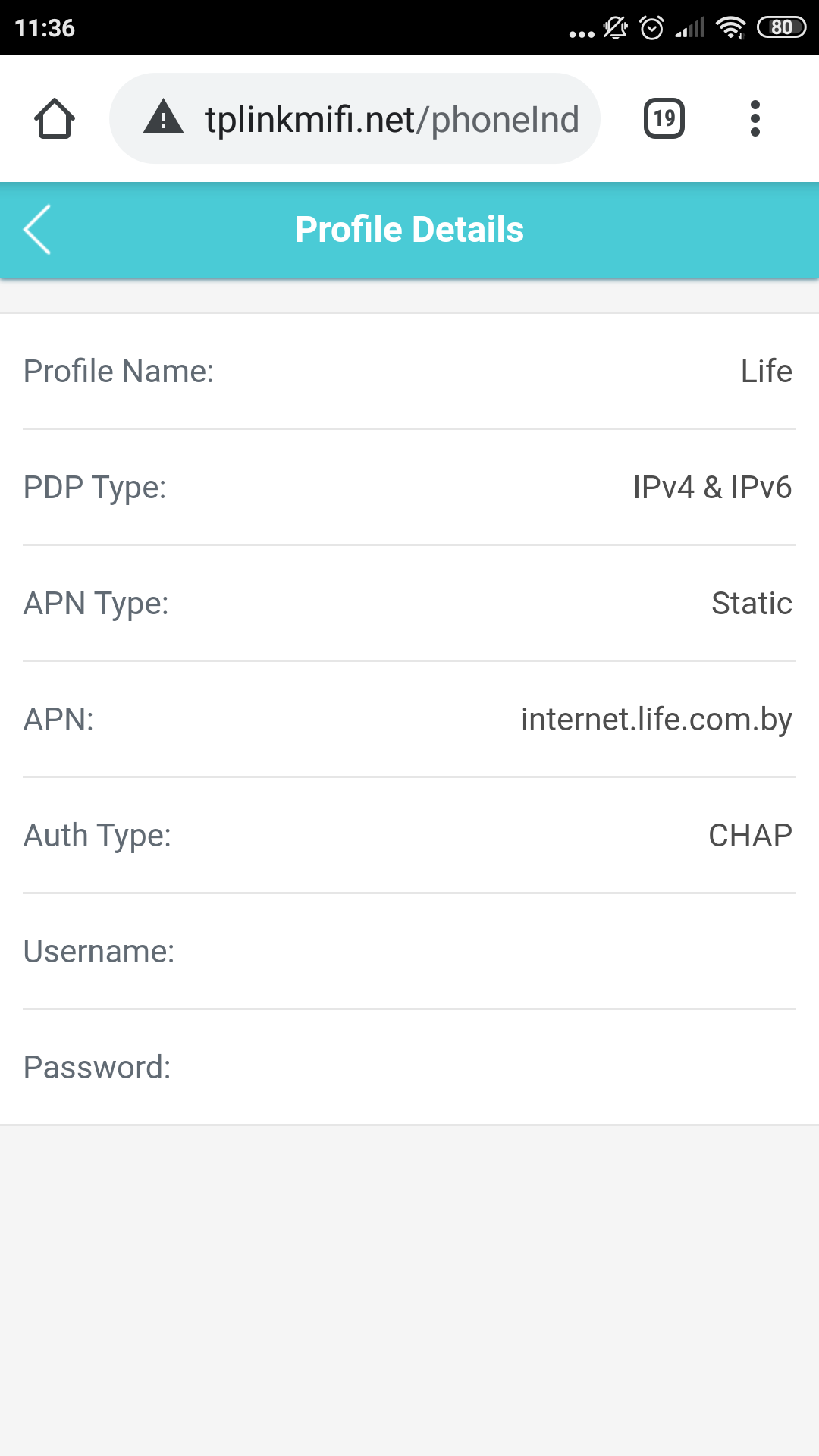
</ img>

</ img>

</ img>
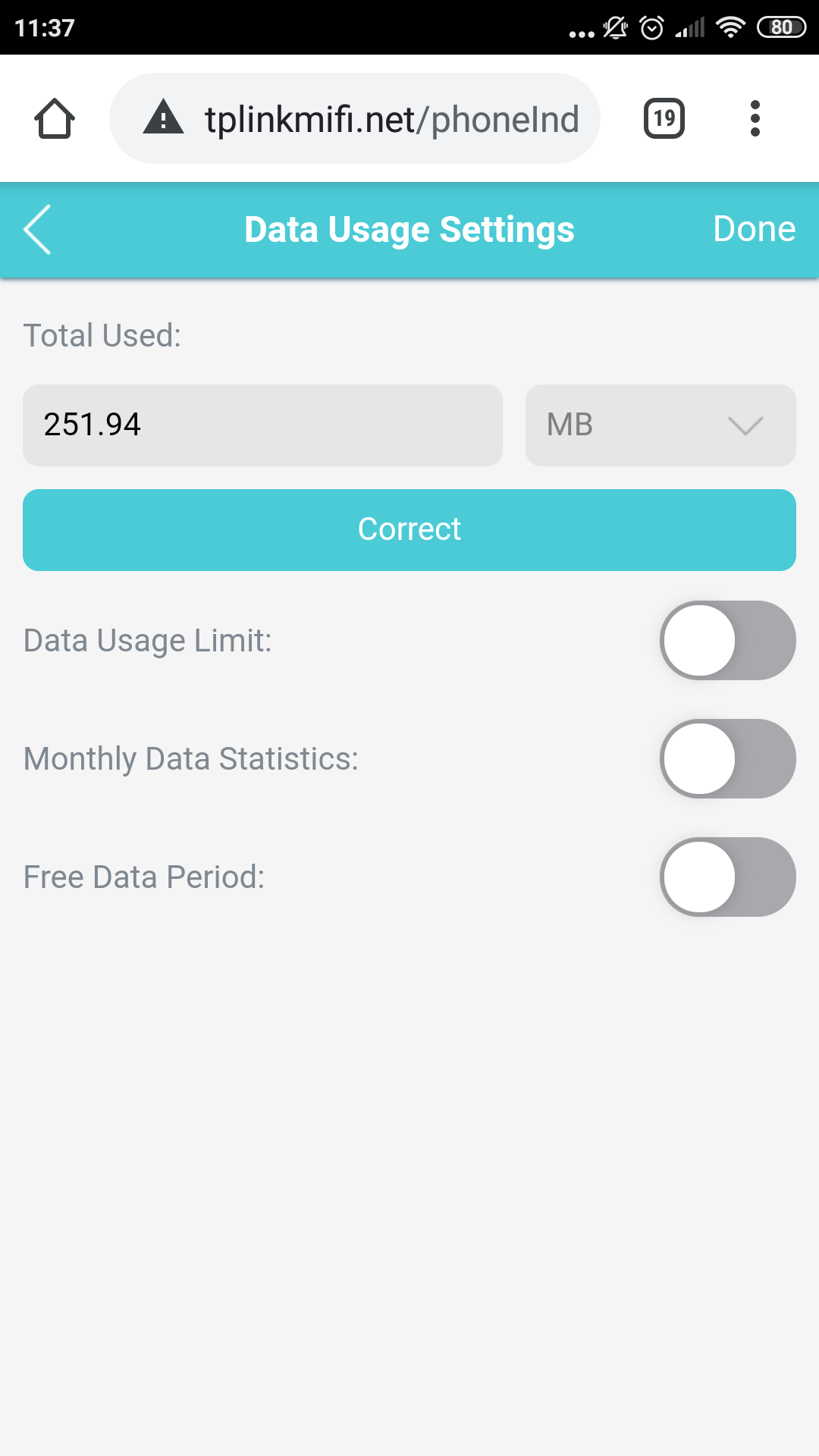
</ img>

</ img>

</ img>
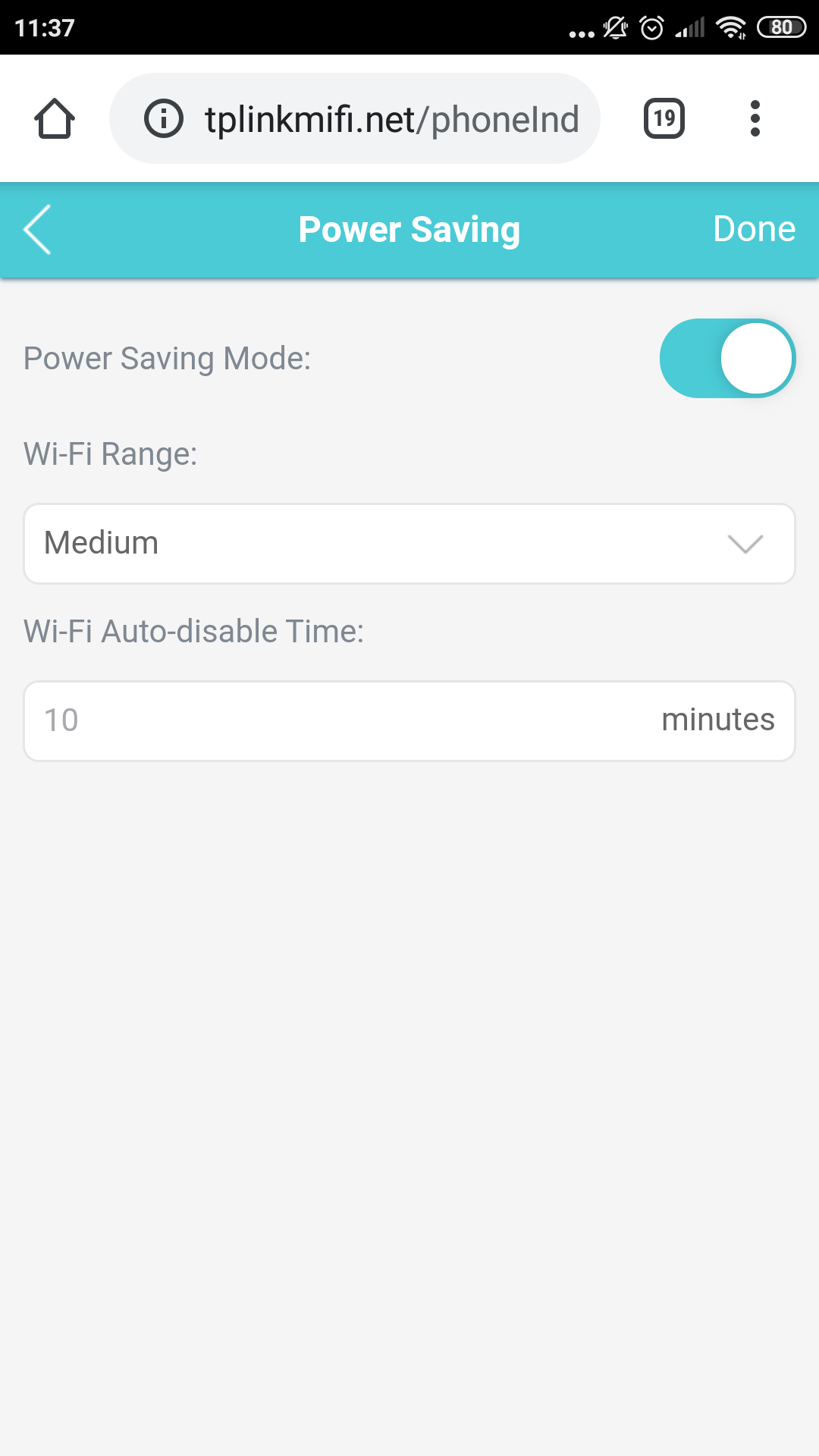
</ img>
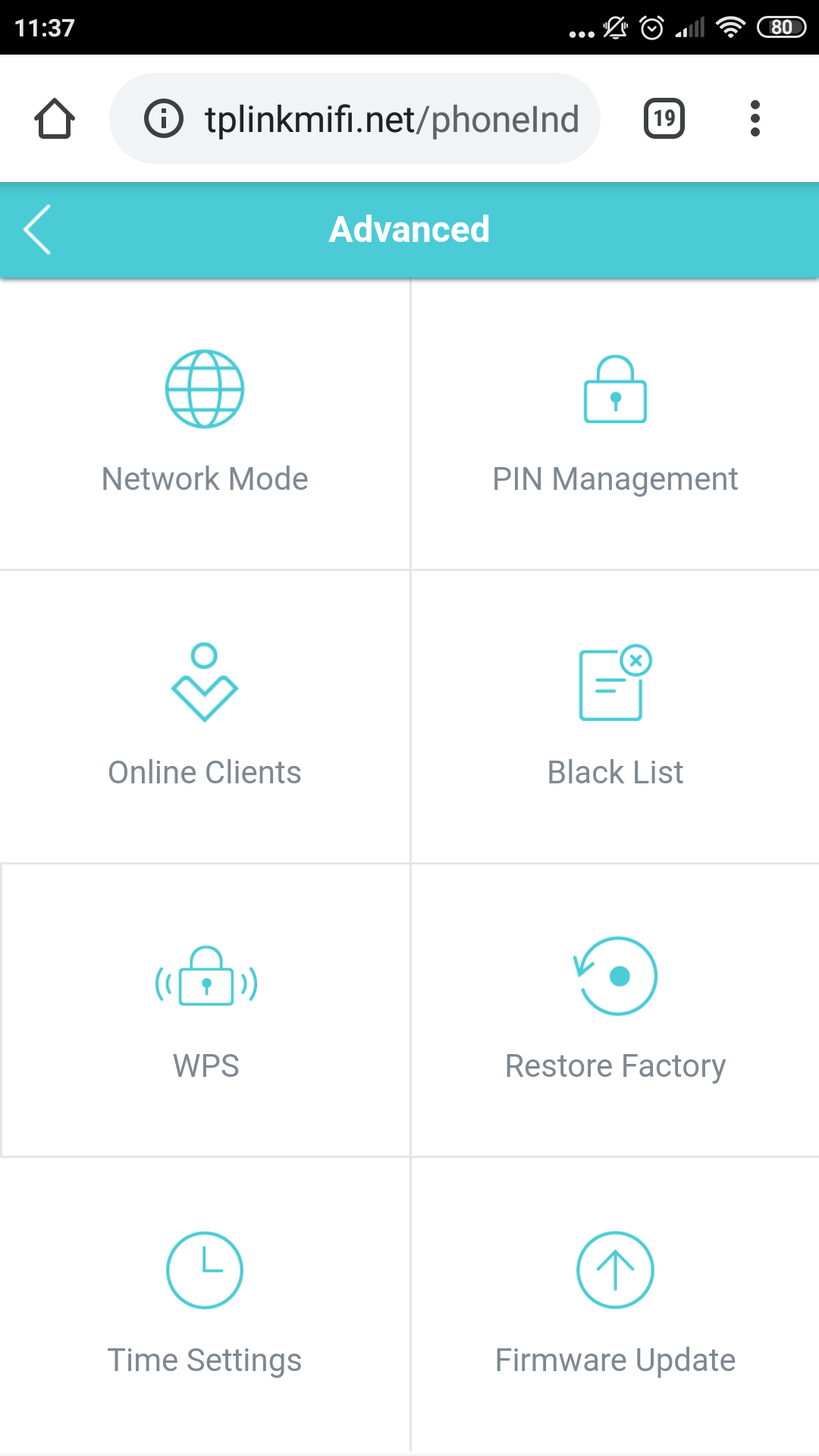
</ img>

</ img>
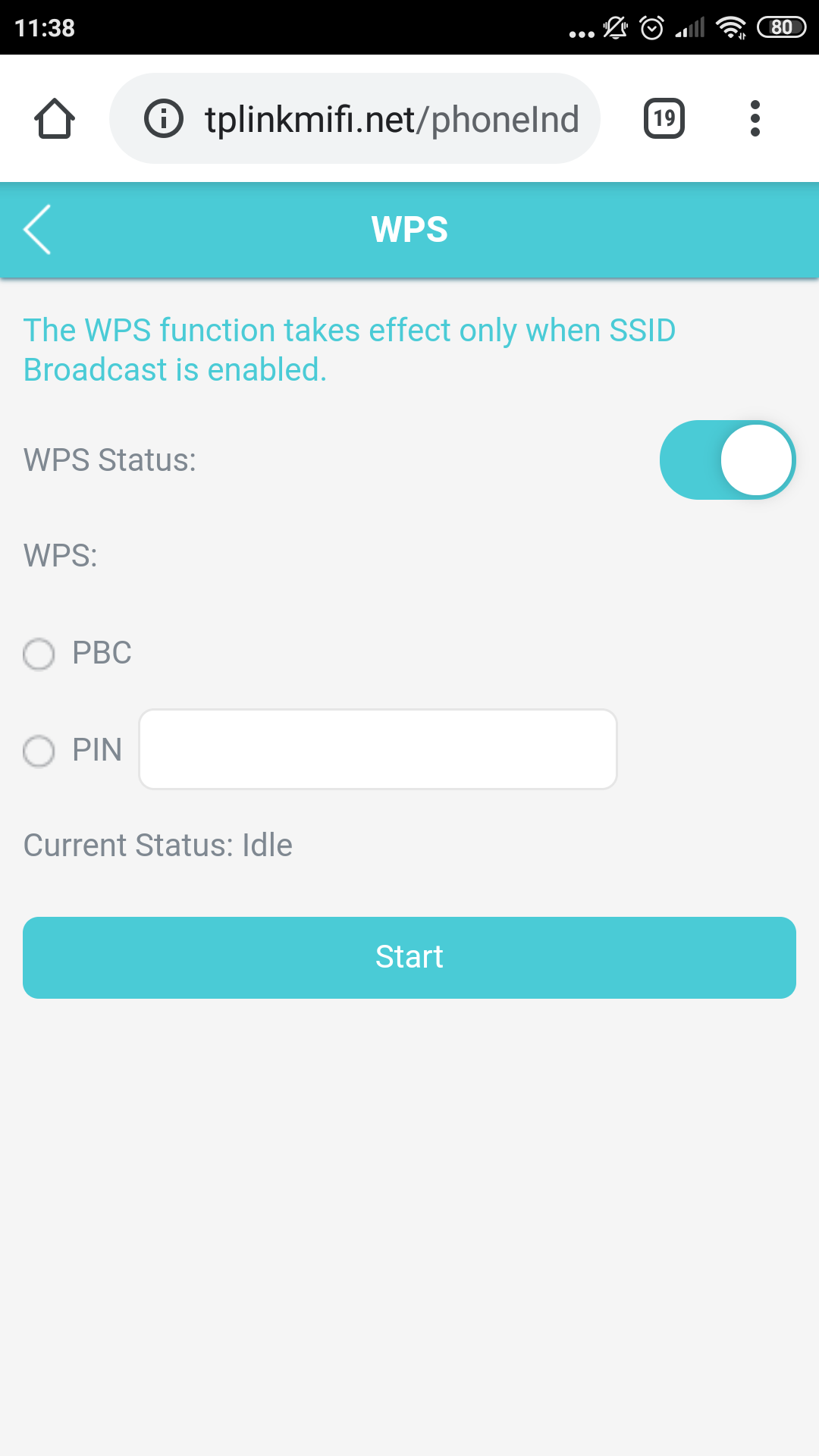
</ img>









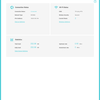
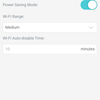


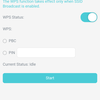
But if in the same web panel you switch frommobile phone to full mode (this is the one that is not so convenient to use from a phone), then there are more possibilities. In particular, NAT, DMZ, virtual server, port management and DHCP settings appear. Like adult routers, in general. One interesting thing is the function of sending USSD requests (all these *111#). That is, you can check your balance or switch to another package right from here, without moving the SIM card into the phone and back.




























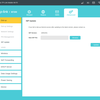





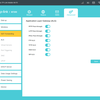



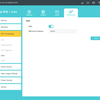

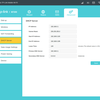
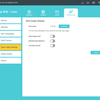
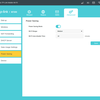



How does it work?
So, as expected, it is quite stable. I tested the TP-Link M7200 with a lifecell SIM card, the Internet speed on client devices ranged from 3 to 15 Mbit / s. Of course, this value depends on the coverage of a particular operator at a specific point on the planet, so it should be compared with other devices that work nearby. If in a simple way, then to view youtube on a couple of connected devices is enough.
But we dig a little deeper and try to evaluateperformance of the wireless network created by the router itself. For this, I used the exchange of TCP traffic between two smartphones connected to a router. Smartphones alternately act as a client and server, transfer 50 megabytes of data between them, repeat the experience, average the results. For experiments, the program WiFi Speed Test Pro is used. So, the average data transfer rate was just over 23 Mbit / s. Do not be alarmed by small numbers, with such testing this is a typical result for household, non-mobile, 2.4 GHz routers. That is, the TP-Link M7200 works on a par with full-bodied home brethren. It’s a pity, he doesn’t have a 5 GHz mode, everything could be even more fun there.
Say something specific about the coverage rangedifficult. On the one hand, there is no forest of antennas protruding from the case; on the other hand, the router will most likely be located close to the devices being serviced: in a pocket/bag, car glove compartment or country house/dacha, where the number of devices requiring an Internet connection is limited . Therefore, there are no complaints about the coverage.
What about autonomy?
According to the manufacturer, the battery capacity2000 mAh is enough for 8 hours of work. In reality, with a continuous intense load, after six hours of operation of the router, 10% of the charge remains, which melts before our eyes over the next 30 minutes. With default settings. With a more relaxed use profile and with reduced power, you can count on the declared performance. I would say that this is one of the important arguments in favor of acquiring such a device. Judge for yourself: in case of emergency you can use a smartphone as a mobile access point, it will share the Internet with a laptop or tablet without any problems. But when it comes to regular and prolonged use, the problem of autonomy rises to the fullest. Not every smartphone will last 8 hours, distributing the Internet to other devices, and you also need to use it. The battery charges from zero to 50% in 50 minutes, and to fully charge it needs two and a half hours.
In the dry residue
TP-Link M7200 - a good solution for distributionMobile Internet over Wi-Fi. Compact, easy to use, quite flexible to set up, with decent autonomy. He has a number of more budget competitors, from which he at the recommended price of 1499 UAH in Ukrainian retail compares favorably, among other things, with official service support. At the same time, not everyone needs such a specific device, because any modern smartphone is suitable for episodic or emergency work as a router.
M7200 can be recommended to users whoOften you need to distribute mobile Internet to other devices (laptops, tablets, and maybe TVs). And basically - outside the house, on the go, in the car, in the country. And often and for a long time, when using a smartphone for such purposes is already inconvenient. For example, to share the Internet on trips with a company of frugal friends, or finally implement full-fledged mobile Wi-Fi in the car.
4 reasons to buy TP-Link M7200:
- compact body and light weight;
- good autonomy;
- performance at the level of stationary routers;
- convenient mobile application.
2 reasons not to buy TP-Link M7200:
- lack of support for the 5 GHz band;
- specific scope.
TP-Link M7200
Compact and lightweight mobile router.Distributes the Internet (including 4G) from the built-in SIM card via a Wi-Fi network. Works autonomously for up to 8 hours and can serve up to 10 client devices. Shows good speed, but only works in the 2.4 GHz band.

Internet in your pocket